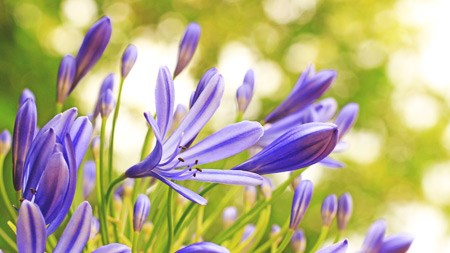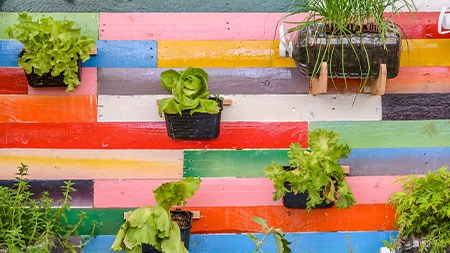Who stole summer? Difficult to believe, but with the Equinox (March 20) only about two weeks down the track, it’s almost over - and just as we were getting used to its warm sunniness, too. Oh well, autumn has its compensations. Especially in the garden.
NATIONAL WATER WEEK
A successful garden needs its water, of course, but the amount it needs is crucial - both for you, the owner (and payer of the bills), and for the natural world that supports us all. So it’s worth learning as much as you can during National Water Week (this year from the 16th to the 22nd of March: the 22nd is also World Water Day).
You could go the whole hog and make a dry landscape, taking your inspiration, perhaps, from the famous rock garden at Japan’s Ryoan-ji (The Temple of the Dragon at Peace). This beautifully serene, 25 x 10 metre courtyard is surrounded on three sides by blank walls, and features just 15 rocks carefully arranged in groups in a sea of raked gravel - the only plants being a few small mounds of moss next to the feature stones. It’s designed to concentrate the mind for the practice of meditation. But is it water-wise?
That depends: how often do the monks of the temple have to irrigate the moss? And how much water do they need to keep the moss alive?
These are fundamental questions when you’re meditate on your own planting scheme - and as you’re preparing your Highveld garden for the dry winter months, or your Cape garden for the wet. (By the way: perhaps you could observe Water Week by calculating your personal water footprint?)
PRUNING & PERENNIALS
The weather during the month of March is generally still hot enough to warrant your continued attention to mulching and composting: the mulch to keep the soil as moist as possible for as long as possible, and the compost to feed everything organically, and to improve the soil’s ability to absorb and retain its water.
If you’re living in a summer-rainfall area, now’s a good time to trim - and maybe lift and divide - many of your perennials: agapanthus, for example, or asters, Dietes, or Shasta daisies (you will remember to dig that compost in before you replant them, right?). It’s also time to prune soft plants like pelargoniums and geraniums.
The winter-rainfall areas of the Western Cape are bulb heaven. In fact the fynbos of the Cape Floristic Kingdom (smallest, but most diverse of the world’s six floristic kingdoms) is defined by its proteas, ericas, Cape reeds, and epiphytes - the bulbous plants. So you can order your babianas, freesias, gladiolus, ixias, tritonias and chincherinchees (Ornithogalum) with a clear conscience - because in your garden, choosing endemics (plants that occur naturally in your specific area) is one of the most water-wise things you can do.
WINTER PANTRY
Although your vegetable garden is probably looking its best around now - and your home-grown diet still consists mostly of cool, crispy, summery salads - it’s worth remembering that you’ll be wanting to cook up a storm of hearty soups and stews come the cold weather. So give a thought to sowing your winter veggies now:
· Temperate summer rainfall areas: broccoli, broad beans, cabbages, Chinese cabbage, carrots, cauliflower, celery, beetroot, lettuce, leeks, peas, onions, radishes, turnips, etc.;
· Tropical summer rainfall areas: broccoli, cabbages, Chinese cabbage, carrots, cauliflower, celery, cucumbers, runner beans, beetroot, peas, leeks, lettuce, onions, pumpkins, radishes, spinach, tomatoes, etc.;
· Winter rainfall area: Chinese cabbage, carrots, cauliflower, celery, kohlrabi, leeks, parsnips, radishes, spinach and turnips, etc. (Although why anyone would plant kohlrabi is beyond this writer, whose culinary skills are - politely speaking - lacking. Perhaps one of our readers would fill us in?)
RESOURCES
Two on-line resources we’ve recently found to help you keep your garden in shape this March:
· The Indigenous Gardener - a free monthly on-line magazine which you can download in pdf format.
· This printable guide to planning your winter food garden printable guide from thegardener.co.za




